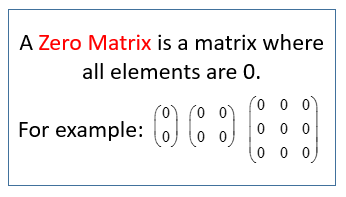

The matrices of the larger matrix known as sonata rondo form are more bound up than the matrices of rondo form, while African and Indian music feature more rhythmic at-oddness than European music's coinciding beats, and European harmony features more at-oddness (between the melody and bass) than the preceding organum. The following examples are some matrices which are part of "Pop Goes the Weasel": major mode 6/8 time four-bar phrasing regular beat rhyming tune structure ending both halves of the tune with the same figure melodic climax perfect cadence three primary triads implied Co-ordinated matrices may possess "bound-upness" or "at-oddness", depending on the degree to which they are connected to each other or go their separate ways, respectively, and are more or less easy to reconcile. The simplest examples given by van der Merwe are fixed notes, definite intervals, and regular beats, while the most complex given are the Baroque fugue, Classical tonality, and Romantic chromaticism. They may be intended by the composer and perceived by the listener, or they may not, and they may be purposefully ambiguous. Musical matrices may be combined in any number, usually more than two, and may be - and must be for analysis - broken down into smaller ones. The term was derived from use in musical writings and from Arthur Koestler's The Act of Creation, who defines creativity as the bisociation of two sets of ideas or matrices. Matrix (music)In music, especially folk and popular music, a matrix is an element of variations which does not change. The Matrix franchise was further expanded through the production of comic books, video games and animated short films, in which the Wachowskis were heavily involved, and even inspired books and theories on ideas in religion and philosophy. The success of the film led to the release of two feature film sequels, both written and directed by the Wachowskis: The Matrix Reloaded and The Matrix Revolutions. The film has since appeared in lists of the greatest science fiction films, and, in 2012, was added to the National Film Registry for preservation. Reviewers praised The Matrix for its innovative visual effects, cinematography and entertainment value. It was well-received by critics and won four Academy Awards, as well as other accolades, including BAFTA Awards and Saturn Awards. The Matrix was first released in the United States on March 31, 1999, and grossed over $460 million worldwide. The Wachowskis' approach to action scenes drew upon their admiration for Japanese animation and martial arts films, and the film's use of fight choreographers and wire fu techniques from Hong Kong action cinema influenced subsequent Hollywood action film productions. It contains numerous references to philosophical and religious ideas, and prominently pays homage to works such as Plato's Allegory of the Cave, Jean Baudrillard's Simulacra and Simulation and Lewis Carroll's Alice's Adventures in Wonderland. The film is an example of the cyberpunk subgenre. " The Matrix is known for popularizing a visual effect known as "bullet time", in which the heightened perception of certain characters is represented by allowing the action within a shot to progress in slow-motion while the camera's viewpoint appears to move through the scene at normal speed. Cybercriminal and computer programmer Neo learns this truth and is drawn into a rebellion against the machines, which involves other people who have been freed from the "dream world. It depicts a dystopian future in which reality as perceived by most humans is actually a simulated reality called "the Matrix", created by sentient machines to subdue the human population, while their bodies' heat and electrical activity are used as an energy source. The Matrix is a 1999 science fiction action film written and directed by The Wachowski Brothers and starring Keanu Reeves, Laurence Fishburne, Carrie-Anne Moss, Hugo Weaving, and Joe Pantoliano.


 0 kommentar(er)
0 kommentar(er)
